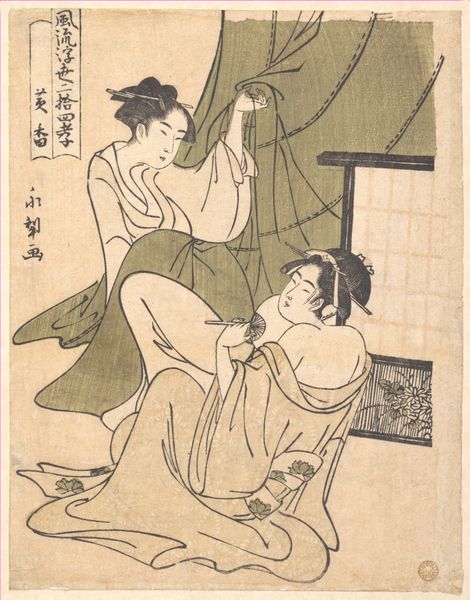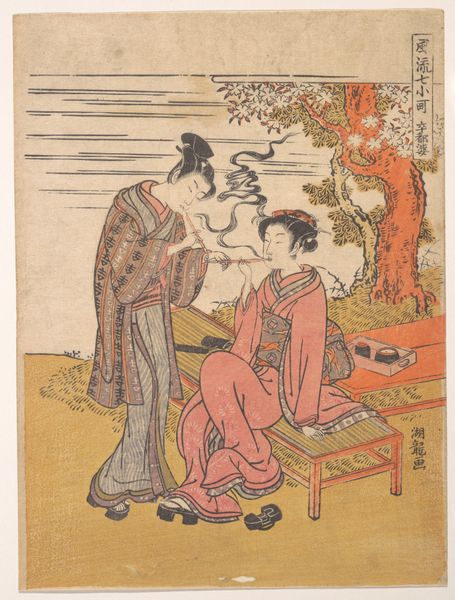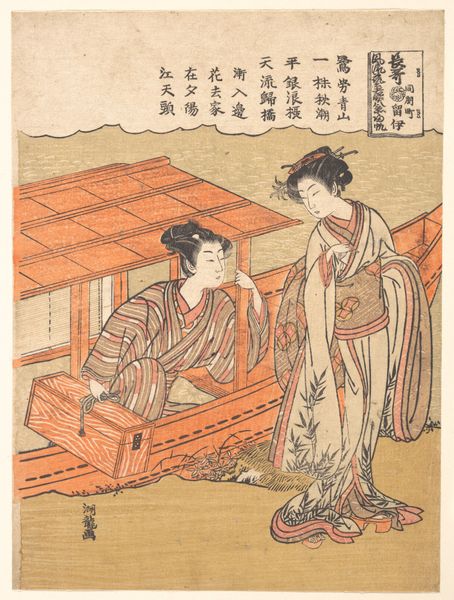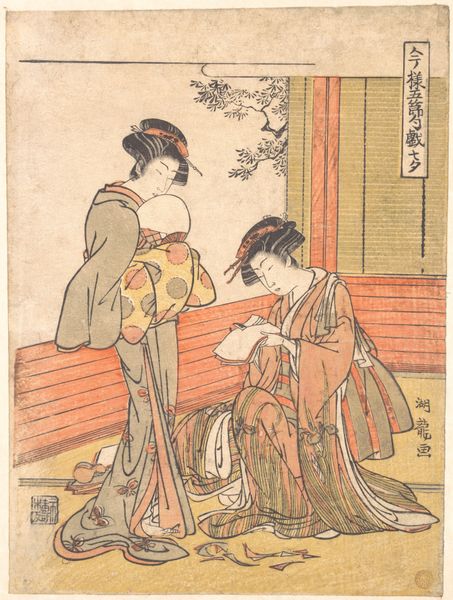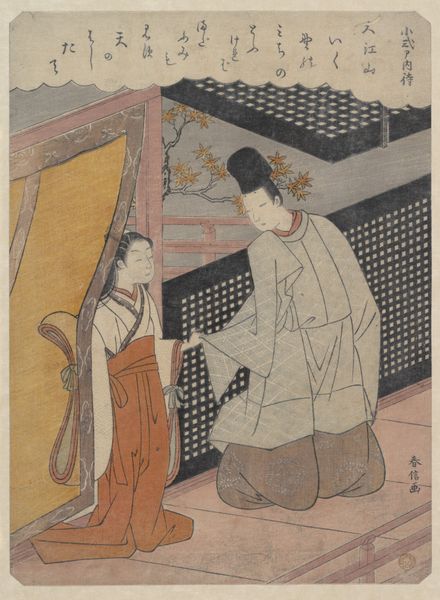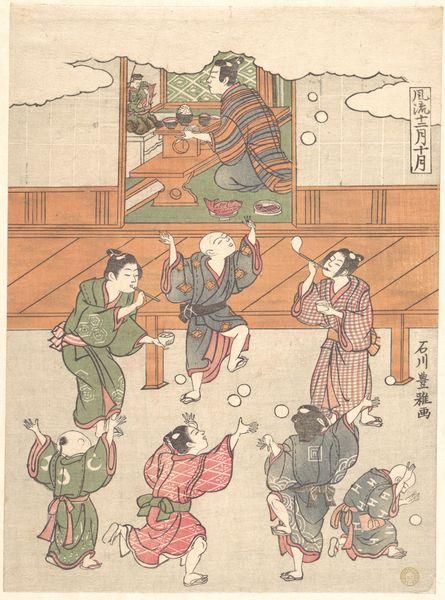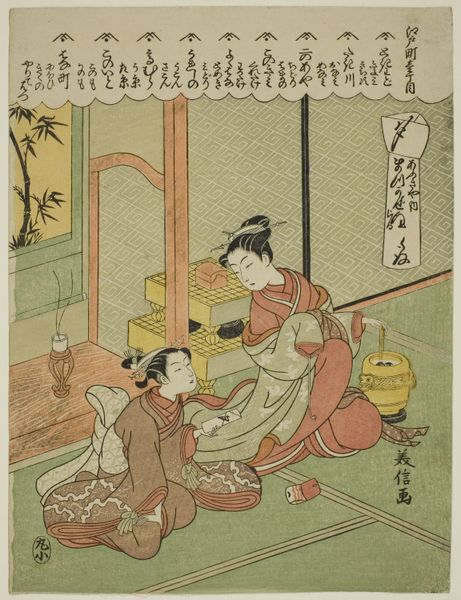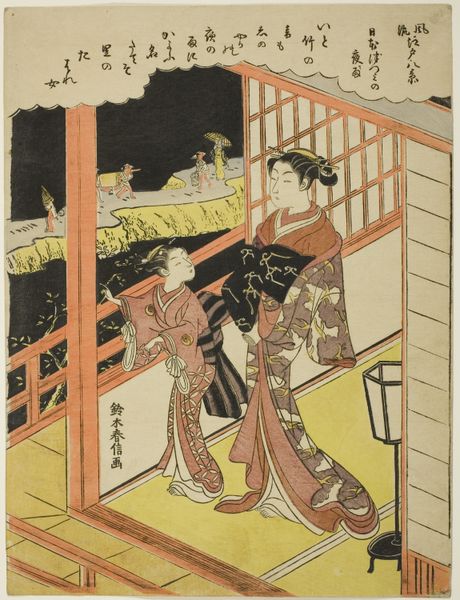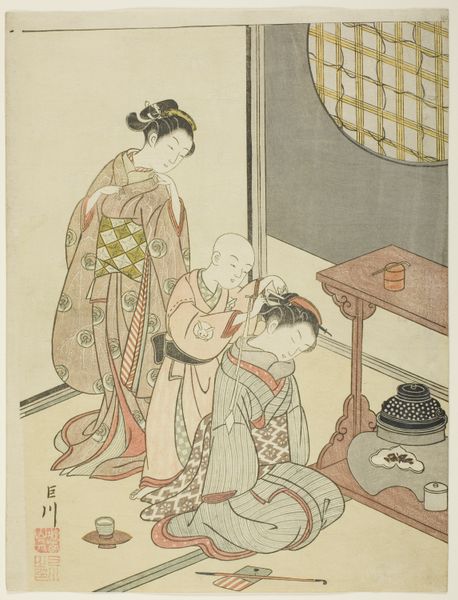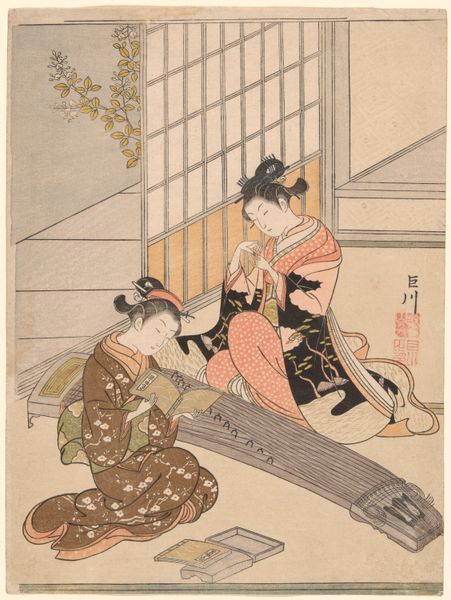
print, woodblock-print
#
portrait
# print
#
asian-art
#
ukiyo-e
#
figuration
#
woodblock-print
#
genre-painting
Dimensions: H. 10 5/8 in. (27 cm); W. 7 5/8 in. (19.4 cm)
Copyright: Public Domain
Editor: Here we have Isoda Koryūsai’s “The Evening Bell under the Watch-tower,” a woodblock print dating from the late 18th century. I'm struck by the contrast between the figures in the foreground and the more angular depiction of the background. How do you interpret this work, considering its cultural context? Curator: It's interesting you notice that contrast. The "Evening Bell" belongs to the ukiyo-e tradition, depicting the "floating world"—a world of transient beauty and pleasure, often featuring courtesans and geishas. Here, two women are indoors, engaged with text, while just outside is the imposing Watch-tower and what look like prison bars in the windows. The question is, how does the print engage with issues of female identity and confinement in Edo period Japan? Consider the socio-political landscape then, where women, particularly those in the pleasure districts, had limited agency. Editor: So the watchtower isn't just scenery. The scene feels so serene, but maybe the tower and the lattice bars on the window remind us of social control... Was literacy common amongst courtesans? Curator: Literacy was, indeed, valued and cultivated among them. They were expected to be accomplished in arts and conversation. However, understanding their education in relation to their social mobility – or lack thereof – provides a sharper lens. Does their literacy become a tool for self-expression or just further entrench them in a system of societal expectations and control? Are they writing to lovers or just studying to entertain? Editor: I hadn't thought about it that way before, about how access doesn't necessarily mean empowerment. I was focused on the beauty of the lines and composition but missed the historical implications. Curator: Exactly! Art is never created in a vacuum. Reflecting on the lives and restrictions placed upon women can really allow us to appreciate the social commentary implied through art. It offers space to explore the societal constraints imposed by patriarchal systems. Editor: Thank you for the insights! This piece makes much more sense now and, even better, helps me to understand a complex situation that isn't immediately apparent.
Comments
No comments
Be the first to comment and join the conversation on the ultimate creative platform.
